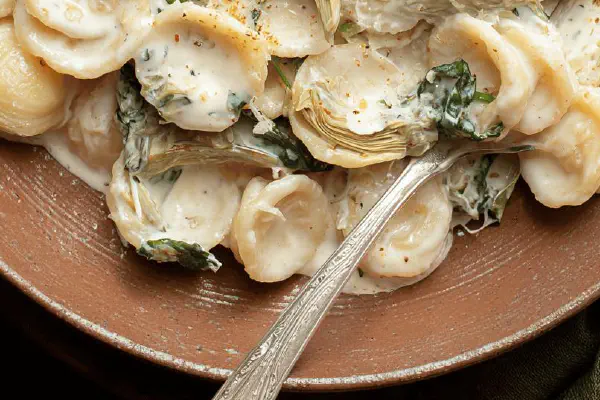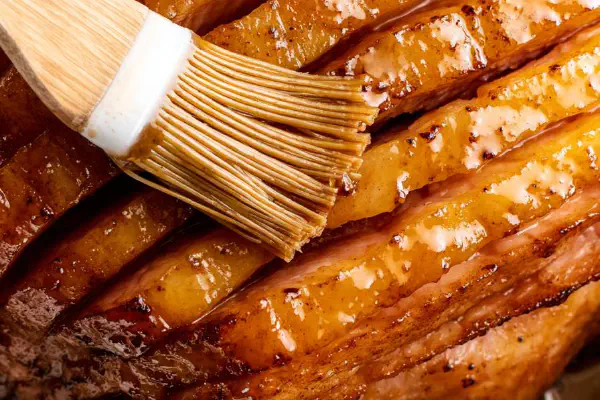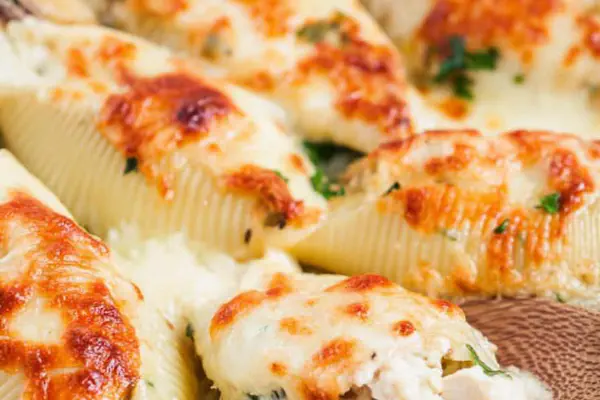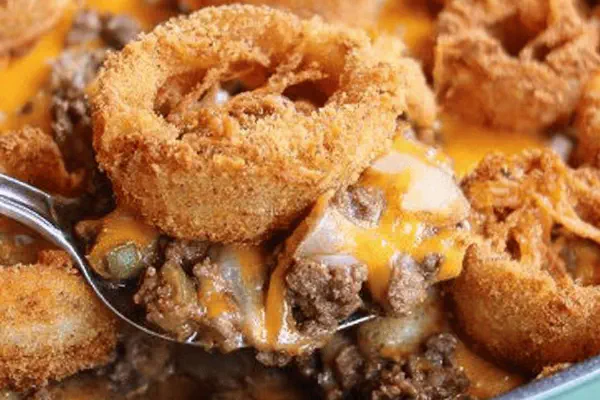Spinach Artichoke Bake

By Emma
Certified Culinary Professional
Ingredients
- 12 ounces short pasta (penne or rigatoni preferred)
- 2 tablespoons olive oil
- 1 medium yellow onion diced
- 3 cloves garlic minced
- 1 teaspoon kosher salt
- 1/2 teaspoon black pepper freshly cracked
- 1/4 teaspoon crushed red chili flakes
- 5 cups fresh spinach roughly chopped
- 1 14-ounce can artichoke hearts drained and chopped
- 4 ounces cream cheese softened
- 1 cup freshly grated Parmesan cheese
- 1/2 cup Greek yogurt
- 1 tablespoon lemon juice freshly squeezed
- 1 cup whole milk
- 2 teaspoons cornstarch
- 1 1/4 cups shredded mozzarella divided
- Optional twist ingredient: swap artichokes for roasted baby bella mushrooms
About the ingredients
Method
- Preheat oven at 345 to 350°F range; I hover at 345 since my oven runs hot. Oven needs to be white hot later for broil but start cooler.
- Salt water heavily, bring pot to full vigorous boil over medium-high heat. Toss pasta in; don't let it go fully; pull when just shy of al dente, about 2 minutes before package suggests. Drain but reserve a cup of that cloudy starchy pasta water—this is liquid gold for texture melding later.
- Dump drained pasta into a 9x13 inch baking pan. Spread out evenly. Set aside for sauce melding.
- Oil warming in skillet, medium heat. Toss onions in, stirring low and easy; sweat them until fragrant and barely browned, about 3 minutes — listen for gentle sizzle, smell that onion sweetness creeping. Add minced garlic, salt, pepper, and chili flakes. Stir quickly, 60 seconds max; garlic browns fast, don't burn or bitterness creeps in.
- Next, in go the spinach leaves. Stir and watch them collapse, shiny, dark, tender now, just on edge before going limp mush. Then in with artichokes or mushrooms if you want. Stir to combine; the pan will steam down moisture. Keep heat moderate so nothing scorches.
- Cream cheese chunks blended in next. Then parmesan sprinkling. Greek yogurt added for tang and silkiness; lemon juice sliced in for brightness. Whisk or stir briskly so cream cheese melts through—no lumps. Meanwhile, whisk cornstarch into milk until smooth then stream in. This thickens as it heats, coats like velvet. Simmer gently to activate cornstarch but don’t let boil bubble hard—watch thickness. Sauce should cling thickly but not gluey.
- Once sauce looks glossy and thickened, add reserved pasta water—the starch in this loosens sauce and helps it cling to noodles. Stir in 1 cup mozzarella until strings appear and melted. Remove pan from heat.
- Pour sauce evenly over pasta in baking dish. Toss gently to coat, avoid breaking pasta but get sauce everywhere. Sprinkle remaining 1/4 cup mozzarella on top for that bubbling finish.
- Bake oven mid-rack 18-22 minutes until sauce is hot and bubbling along edges. Look for bubbles rising, cheese melting visibly, pasta edges starting to brown slightly. For last 1-2 minutes switch oven to broil. Watch carefully, all it takes is a moment for the cheese to turn golden, blister, and form crispy salty crust. Burnt? Happens if you walk away. Visual is everything here.
- Pull from oven. Rest 5 minutes so pasta firms up—sauces thicken and flavors settle. Optional fresh parmesan or parsley garnish is welcome for pop. Serve straight from dish. Rustic, hearty, creamy. Not heavy if you balance sauce correctly. Leftovers reheat well but pasta will soak sauce further.
Cooking tips
Chef's notes
- 💡 Pasta timing critical here. Don’t cook fully in boiling water but pull just shy of al dente, usually 2 min less than package says. Pasta will finish cooking soaking in sauce and oven heat. That reserved pasta water starchy and salty—use it little by little to loosen sauce if feels too thick. Avoid mush, just edge of softness for layers to hold texture after baking.
- 💡 Onion and garlic smoky base needs attention. Sweat onions gentle until barely colored, soft and sweet smelling—3 minutes max. Garlic added last to avoid bitter burn. Stir fast between 30-60 seconds tops. Brown garlic means bitter edges. Feel smell sizzle, gentle sound signals right. It’s a soft scent change not loud crackle. Ignore exact time, trust senses more here.
- 💡 Cornstarch slurry—whisk cornstarch into cold milk so no lumps. Pour slowly into warm sauce while stirring. Important to simmer lightly, not boil hard, or mix might spike thick or turn gluey. Sauce should coat spoon thickly but flow smooth. Too thin add reserved pasta water. Too thick add cold milk bit by bit. Texture matters more than precise grams.
- 💡 Cheeses layered for texture difference. Cream cheese melts creamy, Parmesan adds salty punch, mozzarella melts stretchy. Use whole milk mozzarella for best melt; low-moisture if you want less water bleed. Softened cream cheese key—cold chunks cause lumps. Mix yogurt in last to add tang and balance richness. Don’t overdo or sauce breaks or curdles suddenly.
- 💡 Broiling last 1-2 minutes watch carefully. Cheese browns fast from bubbly to burnt in seconds. Visual cues vital: bubbling sauce edges, cheese stringing then blistering crust. Oven temps vary a lot. Rest dish 5 min after out—sets sauce thickness, flavors blend. Reheat leftovers gently adding splash reserved water if sauce thickens too much.
Common questions
Can I substitute spinach?
Yes—kale or Swiss chard work but wilt timing differs. Spinach wilts fast, kale slower, tougher. Adjust sauté times closely. Avoid frozen spinach—adds unwanted water and thinning in sauce.
What if no cream cheese?
Cashew cream or ricotta can replace but texture shifts. Cashew cream needs thinning, ricotta adds grain. Adjust milk and thickener carefully to maintain smooth silky sauce quality.
How to avoid mushy pasta?
Underboil pasta in salted water, drain but reserve water. Toss pasta in unbaked stage only. Baking softens pasta further. Avoid stir-mash when combining pasta-sauce. Gentle toss preserves shape. Timing is sensory: smell softness, look for slight edge browning.
Best way to store leftovers?
Cool quickly, refrigerate in airtight container. Reheat gently on stove or microwave adding splash reserved pasta water to loosen thick sauce. Overheating dries sauce or dulls textures. Can freeze but texture changes; thaw slowly, reheat on low.



